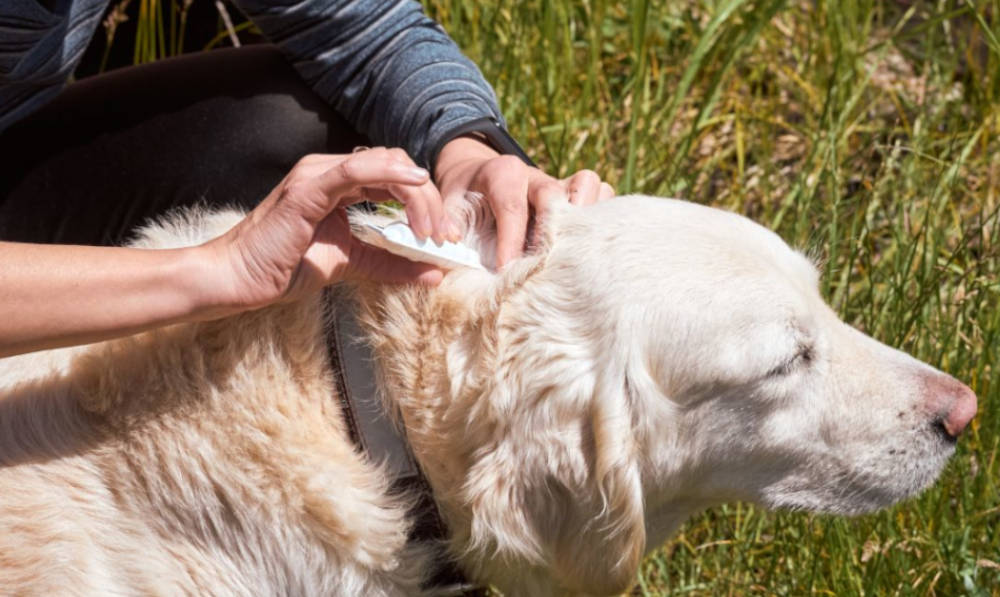KEY TAKEAWAYS:
Use Preventative Products: Consult your vet to choose the best tick prevention method for your dog, such as topical treatments, oral medications, tick collars, or shampoos.
Regular Checks: Frequently inspect your dog, especially after outdoor activities, focusing on common tick hiding spots like around the ears, under the collar, and between the toes.
Maintain a Tick-Free Yard: Regularly mow your lawn, clear brush and leaf litter, create barriers with wood chips or gravel, and consider using tick control treatments in your yard.
Grooming and Bathing: Regular grooming and bathing with tick-repellent shampoos can help spot and remove ticks before they attach.
Know Tick Removal: Learn to safely remove ticks with fine-tipped tweezers, disinfect the bite area, and monitor your dog for any signs of illness.
Ticks are small, blood-sucking parasites that can pose a significant threat to your dog’s health.
They can transmit serious diseases such as Lyme disease, ehrlichiosis, and anaplasmosis. Keeping your dog safe from ticks involves a combination of preventive measures, regular checks, and prompt action if ticks are found.
Here are some comprehensive steps to help you protect your furry friend from these pesky parasites.
1. Use Tick Preventatives
There are various tick prevention products available on the market. These include:
Topical treatments: Applied directly to your dog’s skin, these solutions kill ticks on contact.
Oral medications: Given monthly, these medications kill ticks that bite your dog.
Tick collars: These collars release chemicals that repel and kill ticks.
Shampoos and dips: Special shampoos and dips can provide temporary protection.
Consult your veterinarian to determine the best product for your dog based on their health, lifestyle, and the prevalence of ticks in your area.
2. Regularly Check Your Dog for Ticks
Even with preventatives, it’s crucial to regularly check your dog for ticks, especially after they have been outside in tick-prone areas like woods, tall grasses, or fields.
Pay special attention to the following areas:
- Around the ears
- Under the collar
- Between the toes
- Under the tail
- Around the eyes and eyelids
Run your hands over your dog’s body to feel for any small bumps, and visually inspect their coat
Ticks can be as small as a pinhead or as large as a pencil eraser, depending on their stage of development and how long they have been feeding.
3. Maintain a Tick-Free Environment
Keeping your yard and home tick-free can significantly reduce the risk of tick bites. Here are some tips:
Mow your lawn regularly: Ticks thrive in tall grass and vegetation.
Clear brush and leaf litter: These areas are common tick habitats.
Create a tick barrier: Use wood chips or gravel between lawns and wooded areas.
Treat your yard: Consider using tick control treatments recommended by pest control experts.
4. Grooming and Bathing
Regular grooming and bathing can help keep ticks at bay. Brushing your dog’s coat regularly can help you spot ticks before they attach.
Using a tick-repellent shampoo can provide additional protection, especially during peak tick season.
Consult your veterinarian to see if these vaccines are appropriate for your dog.
5. Know How to Remove Ticks
Despite your best efforts, your dog might still get a tick from time to time. It’s crucial to know how to safely remove a tick to minimize the risk of disease transmission.
Here’s how to do it:
Use fine-tipped tweezers: Grasp the tick as close to your dog’s skin as possible.
Pull steadily and firmly: Do not twist or jerk the tick, as this can cause parts to break off and remain in the skin.
Disinfect the bite area: Use rubbing alcohol or soap and water.
Dispose of the tick: Place the tick in a sealed container or flush it down the toilet.
Monitor your dog: Watch for signs of illness such as lethargy, loss of appetite, or swelling at the bite site.
6. Stay Informed
Ticks are more prevalent in certain areas and during specific times of the year. Stay informed about tick activity in your region and adjust your preventive measures accordingly.
Your veterinarian can provide valuable information about local tick risks and how to manage them effectively. And we also recommend reading up on what to do if you find a tick on your body.

